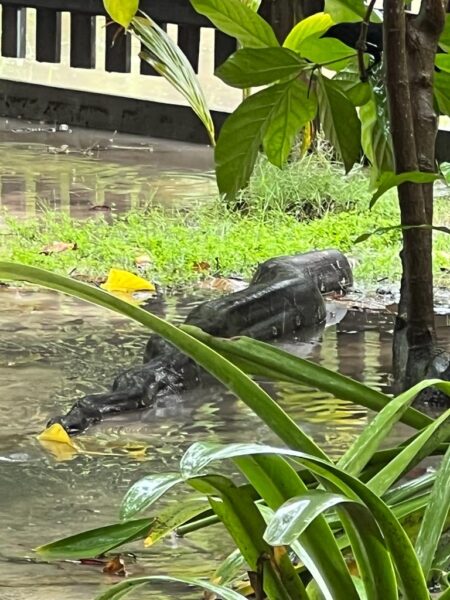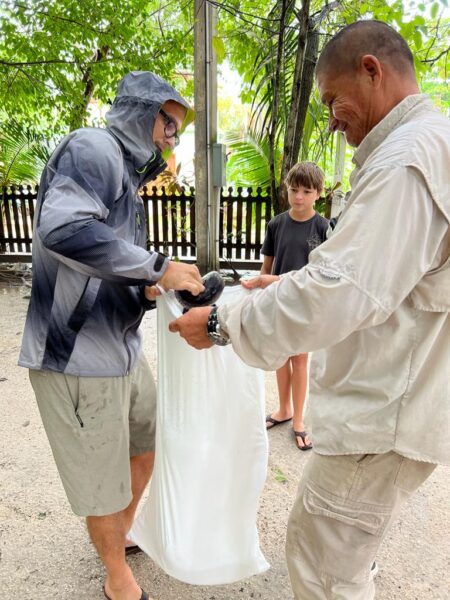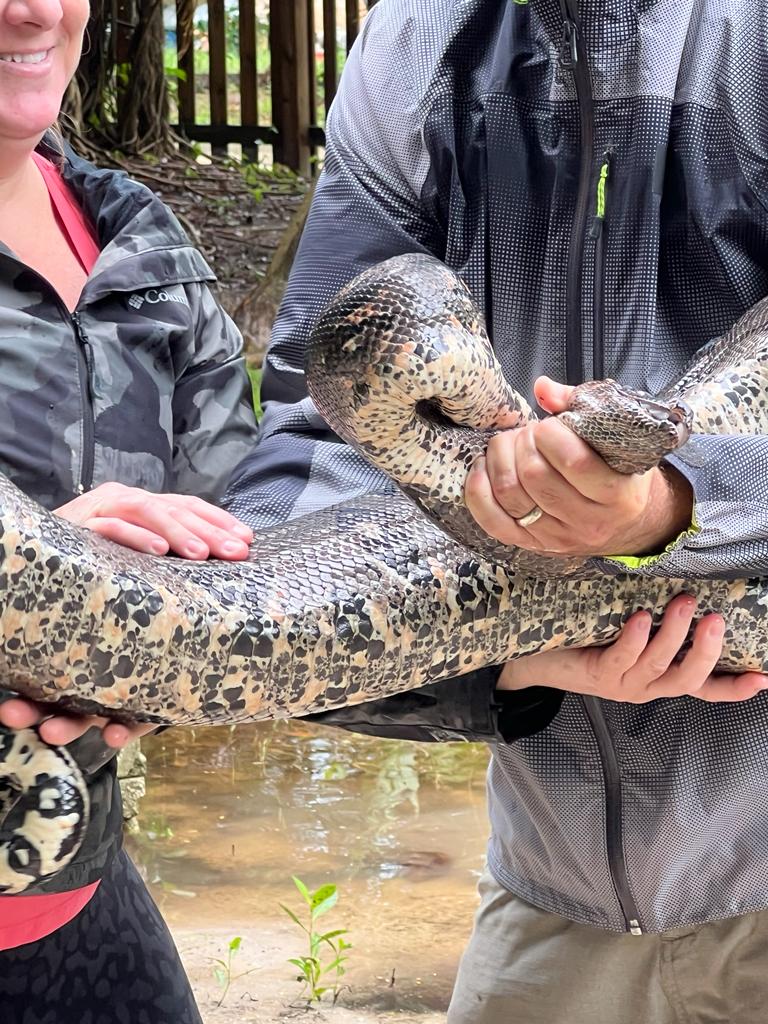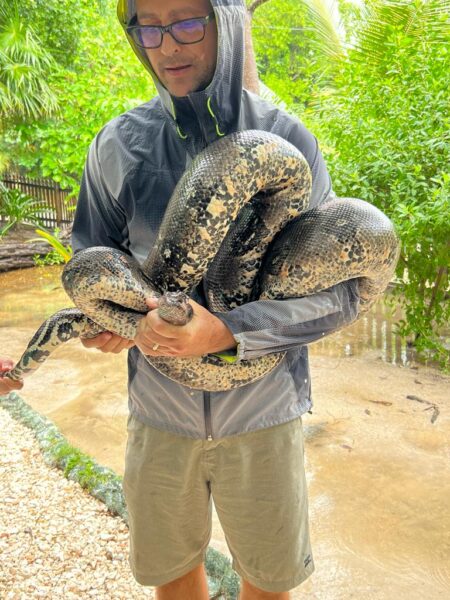Over the last few years, ACES Wildlife Rescue has evolved from solely working with problematic and injured crocodiles to aiding all forms of wildlife in need. They have seen their share of creatures here on Ambergris Caye, from iguanas and bats to turtles, land and sea birds, and even opossums and ant eaters! One common call is when a boa constrictor harmlessly surfaces where he’s not welcome. ACES volunteers Ben and Rae Sept were in for a surprise when they answered a call to help relocate the largest boa the organization has ever seen.
Weighing in at 43 pounds and approximately ten feet long, the ACES team quickly contained the creature as it made its way through muddy puddles in a neighbor’s yard. Once secure, they transported the snake to the ACES facility, where it underwent a thorough health assessment before being released in a remote area.
According to ACES lead wildlife rehabilitator Christina Manzi, although boas are the most common snake on the island, it’s rare to find one of this size, and it is clearly an animal forced out of its habitat by deforestation. “Boas are common on Ambergris Caye. When seen, they likely are just passing through and want to disappear away from people who they are deeply afraid of. They are non-venomous and choose flight over fight when given an escape path,” she explained. “She was at a beautiful weight, so she was living quietly for likely teens to possibly even 20 years. It’s impossible to know her age, but her size and girth tell us she’s a wise lady who’s done wonderful things for her population. Boas face so many obstacles in their life, so it is truly special to see one be able to live such a long life.”
ACES Board member and volunteer Ben, who captured the serpentine intruder with the help of his wife Rae, marveled at how healthy the animal was. “She was very well-fed, most likely eating raccoons and rats in the area and living well. It probably means now that we had to relocate her, we will probably see some of those rodent populations increase.” He added that capturing boas is much easier and safer than handling crocodiles!
After passing its health inspection with flying colors, the boa was released in a remote location where she can hopefully live without human conflict. “She was absolutely stunning!!!” Manzi commented.” I was in complete awe when I got to release her. Just a magnificent animal to behold. Such an honor to have been able to see her.”
Boa constrictors, known as “wowla” in Belize, are found countrywide and on some offshore cayes like Ambergris. They are the largest snake in Belize, attaining a length of up to twelve feet. They are a solitary species with a diet of small mammals, including bats, birds, and rodents such as rats. This is a huge plus for humans as they serve as pest control, keeping the rodent population in check. The Boa Constrictor is also fully protected by Belize’s Wildlife Protection Act (WPA), making capturing, killing, or keeping them as pets illegal.
Aces is a non-profit wildlife rescue organization permitted by the Belize Forest Department. If you ever encounter a wild animal needing assistance, whether injured, hurt, or orphaned, contact Aces Wildlife Rescue at +501-623-7920 or [email protected]. For more information or to contribute, please visit AcesWildlifeRescue.org.




